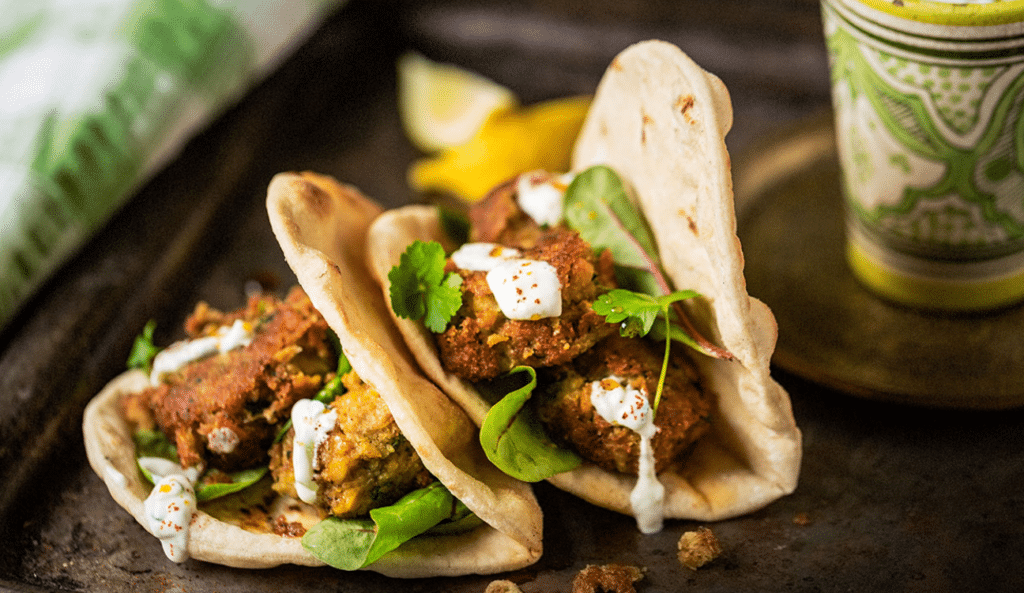The Classic Middle Eastern Falafel
Originating in the Middle East, classic falafel is typically made from ground chickpeas or fava beans mixed with herbs, spices, and onions. The mixture is formed into balls or patties and deep-fried until golden brown and crispy. It is often served in a pita bread pocket with salad, tahini sauce, and pickles. This version of falafel is beloved for its crunchy exterior and tender, flavorful interior, making it a popular street food snack in countries like Lebanon, Israel, and Jordan.
The Egyptian Ta’amiya
In Egypt, falafel is known as “ta’amiya” and is traditionally made using fava beans instead of chickpeas. The fava beans are combined with fresh herbs such as parsley and cilantro, along with spices like cumin and coriander, to create a fragrant and flavorful mixture. The ta’amiya is then shaped into small patties and deep-fried until crispy. It is typically served with baladi bread, tahini sauce, and a side of pickled vegetables. The Egyptian ta’amiya is prized for its rich, earthy flavor and satisfying crunch.
The Greek Revithokeftedes
In Greece, falafel takes on a slightly different form known as “revithokeftedes.” The revithokeftedes are made with crushed chickpeas, which are mixed with onions, garlic, and fresh herbs such as dill and mint. The mixture is shaped into small balls and fried until golden and crispy. Revithokeftedes are often served as part of a mezze platter alongside other Greek appetizers like tzatziki, olives, and stuffed grape leaves. They are cherished for their light and fluffy texture and delicate herbal flavor.
The Cypriot Louvana Falafel
In Cyprus, falafel is known as “louvana” and is made with yellow split peas instead of chickpeas or fava beans. The split peas are soaked overnight, then blended with onions, garlic, and spices such as cumin and coriander. The mixture is formed into balls and deep-fried until golden and crispy. Louvana falafel is often served with pita bread, tahini sauce, and a fresh tomato and cucumber salad. It is celebrated for its vibrant yellow color and hearty, satisfying texture.
To conclude, these are just a few examples of the diverse regional variations of falafel found across the Mediterranean. Each variation offers a unique culinary experience, reflecting the flavors, ingredients, and cultural heritage of its respective region. Whether you prefer the classic Middle Eastern falafel, the earthy Egyptian ta’amiya, the herbaceous Greek revithokeftedes, or the hearty Cypriot louvana falafel, one thing is certain – falafel is a delicious and versatile dish that unites people across borders and generations.
Learn more about falafel:

